Easter cassia
Senna pendula var. glabrata, Fam. Caesalpiniaceae
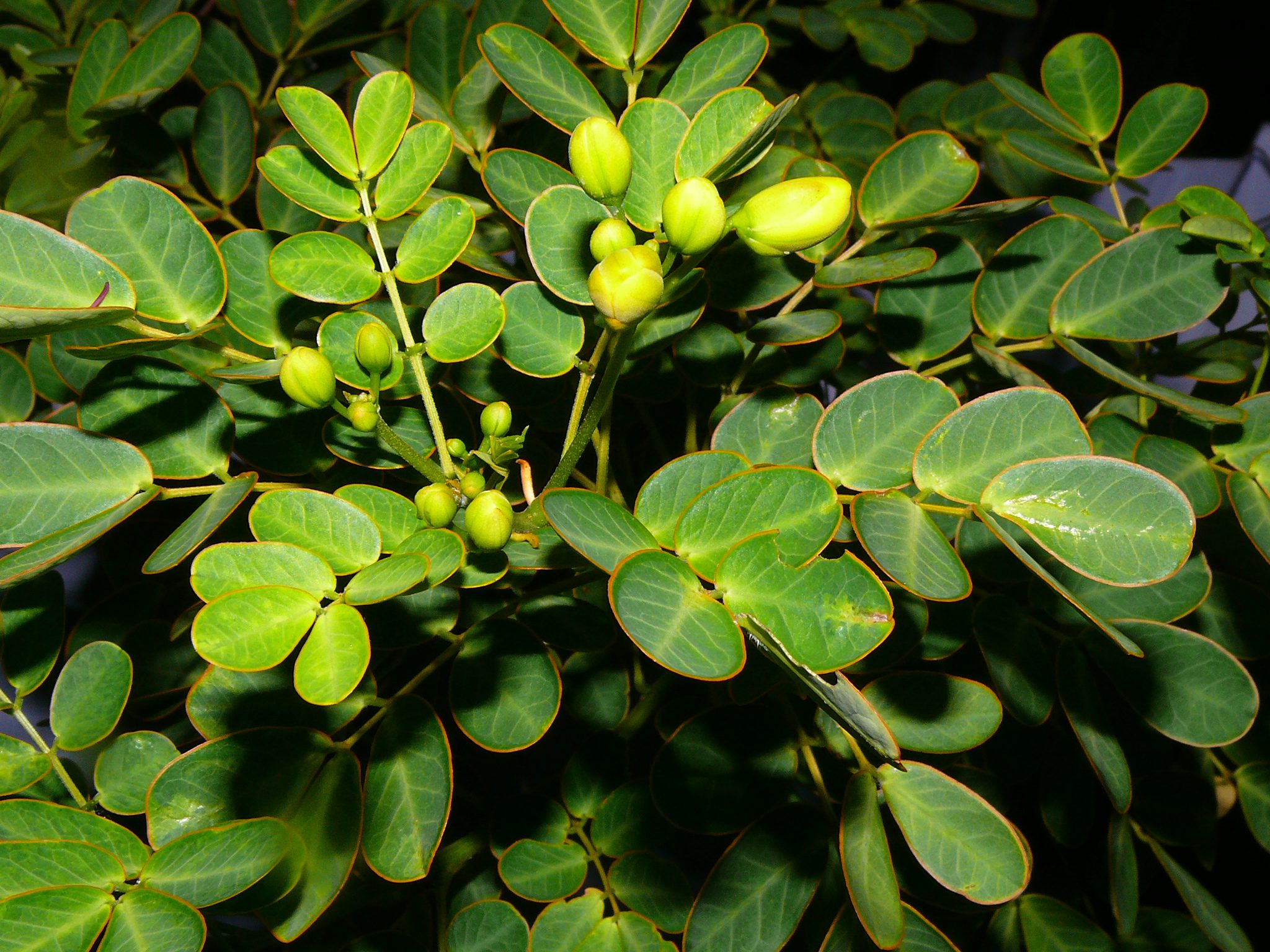
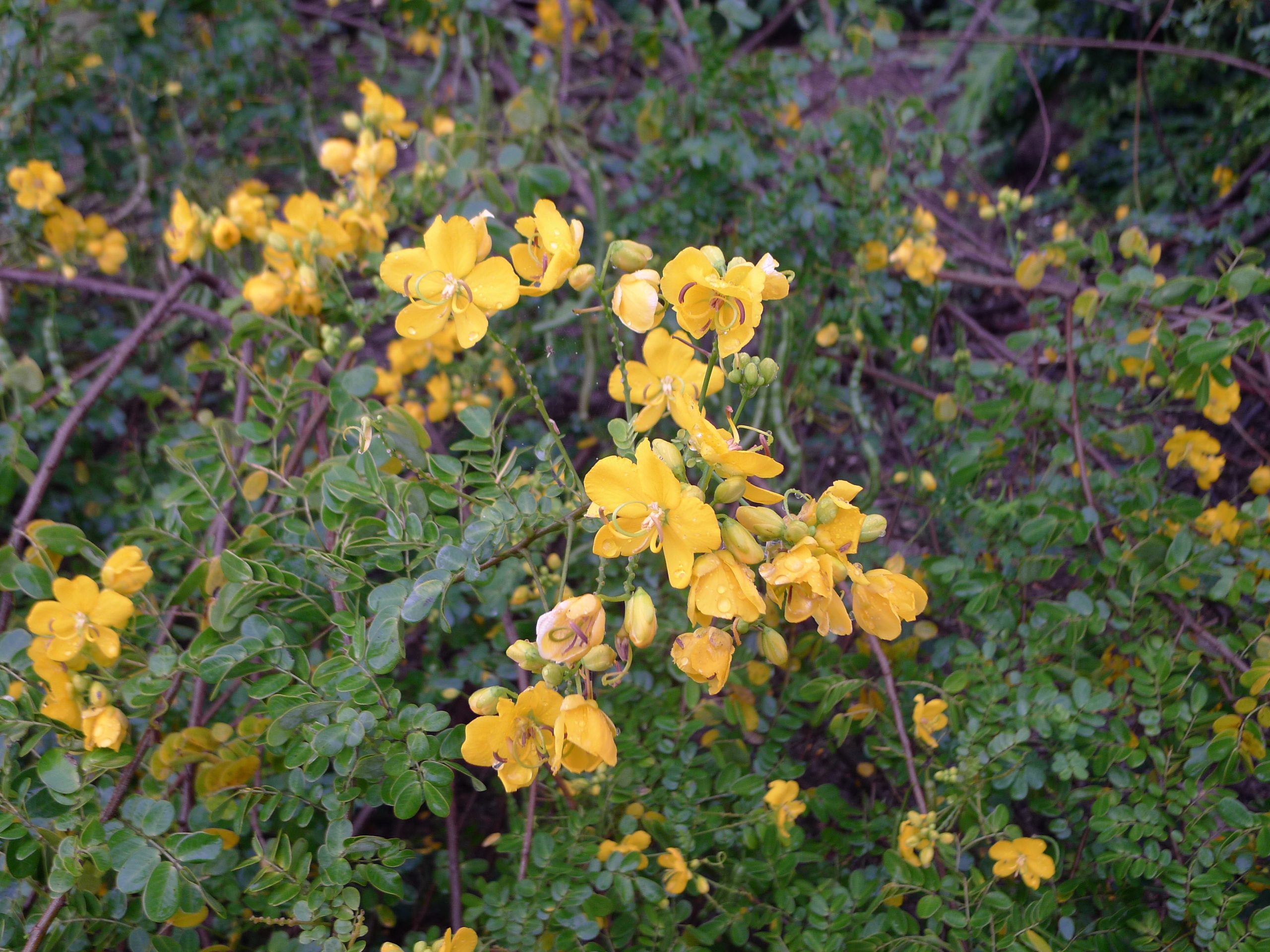
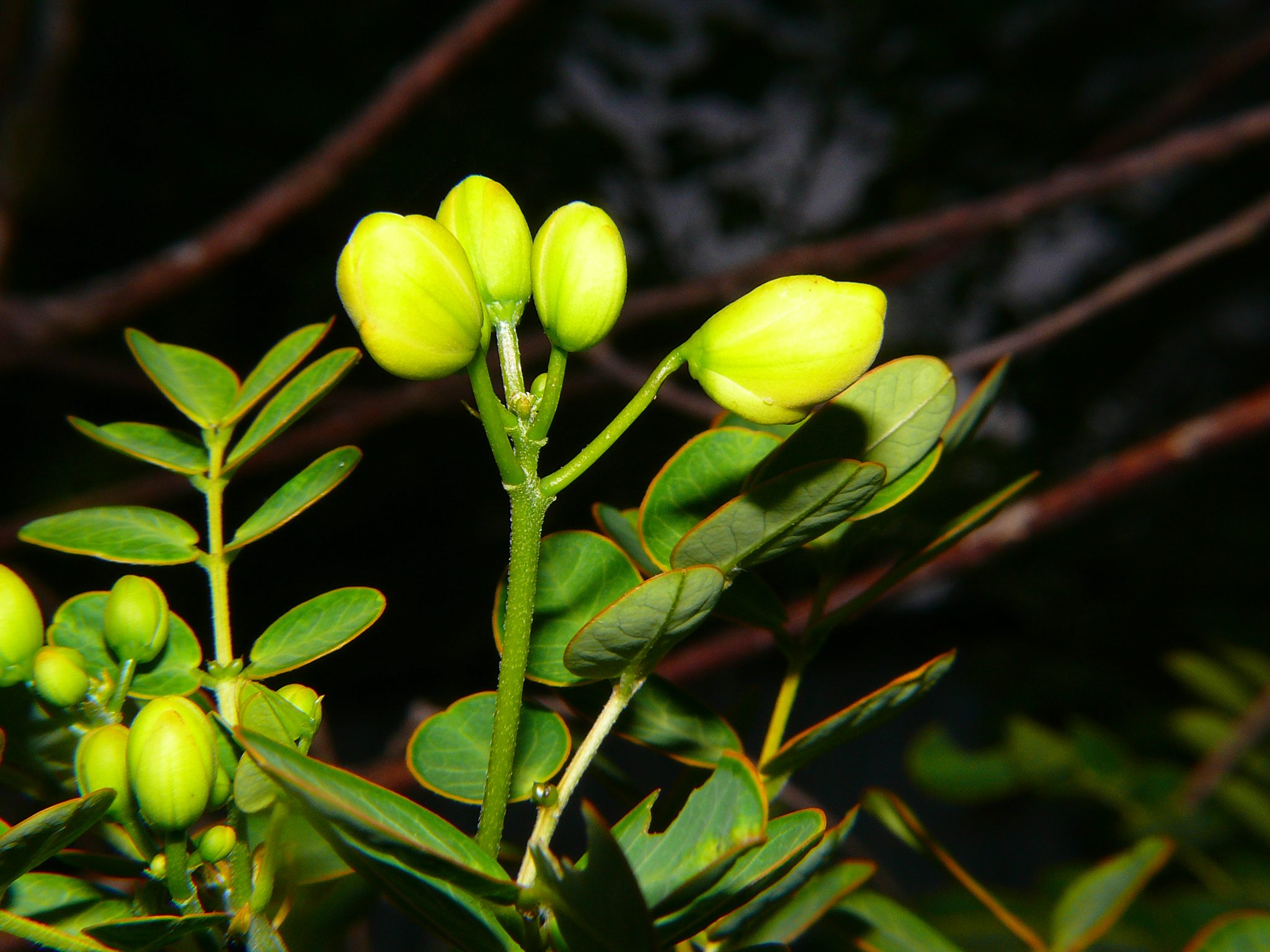
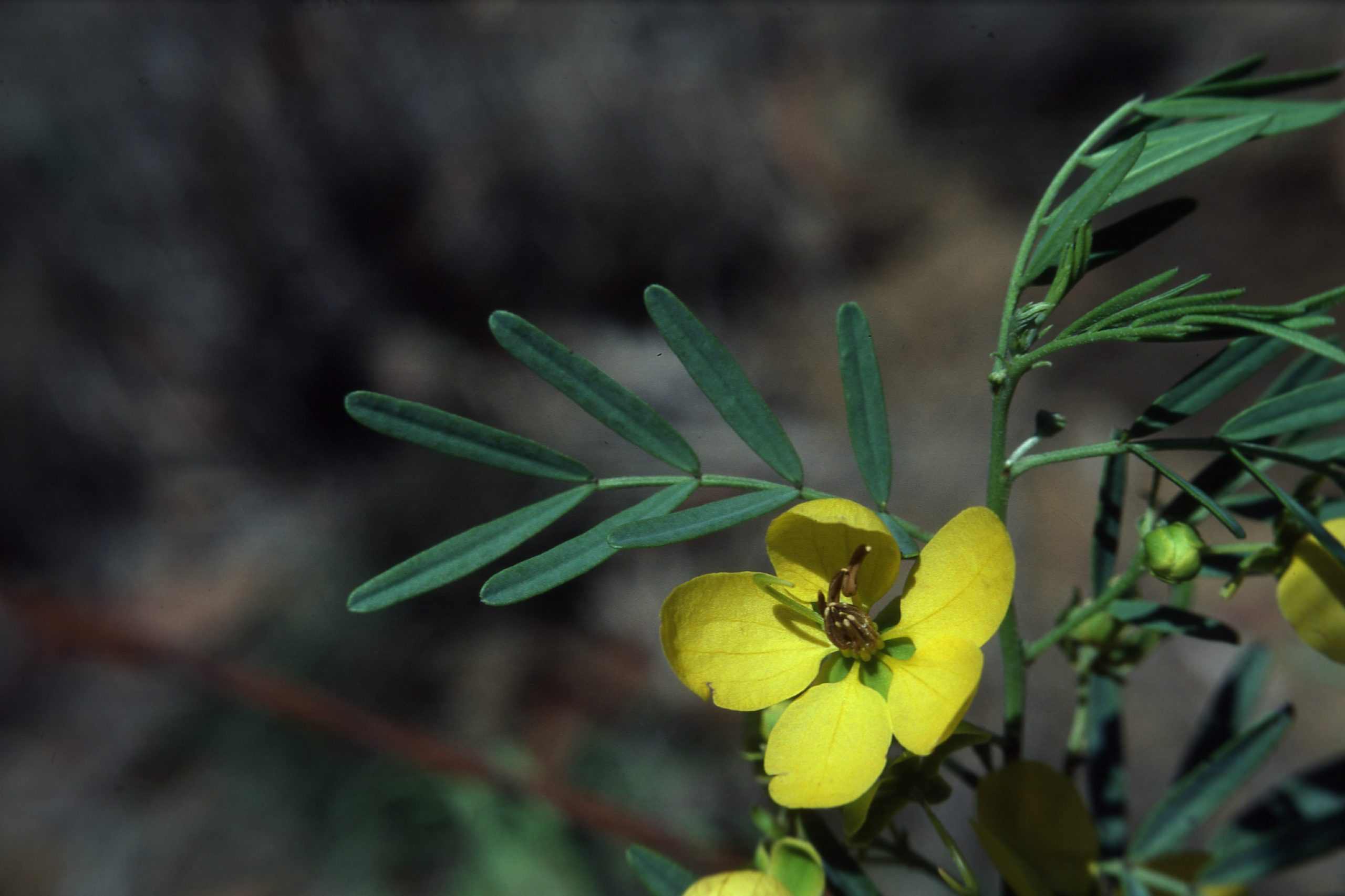
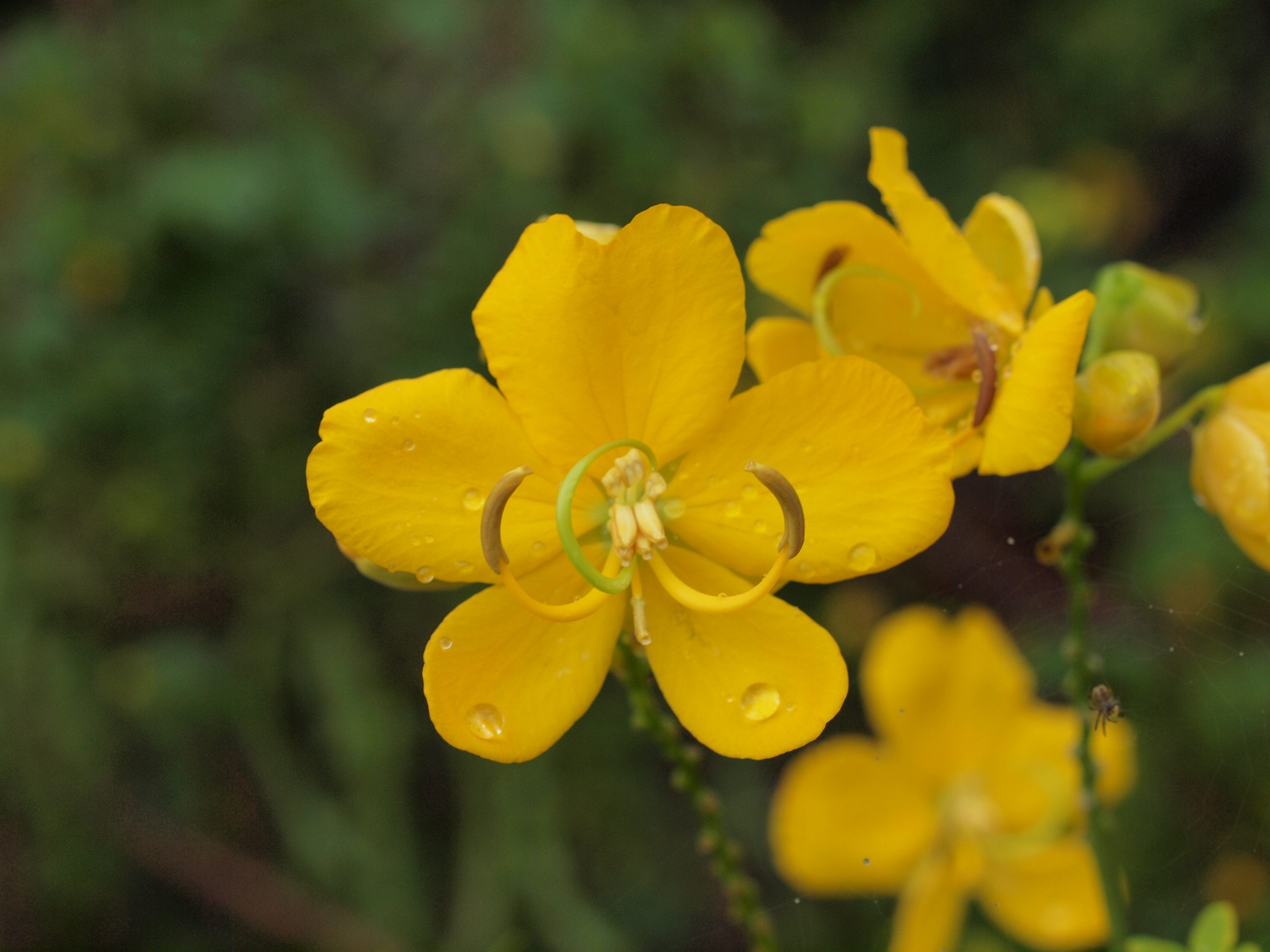
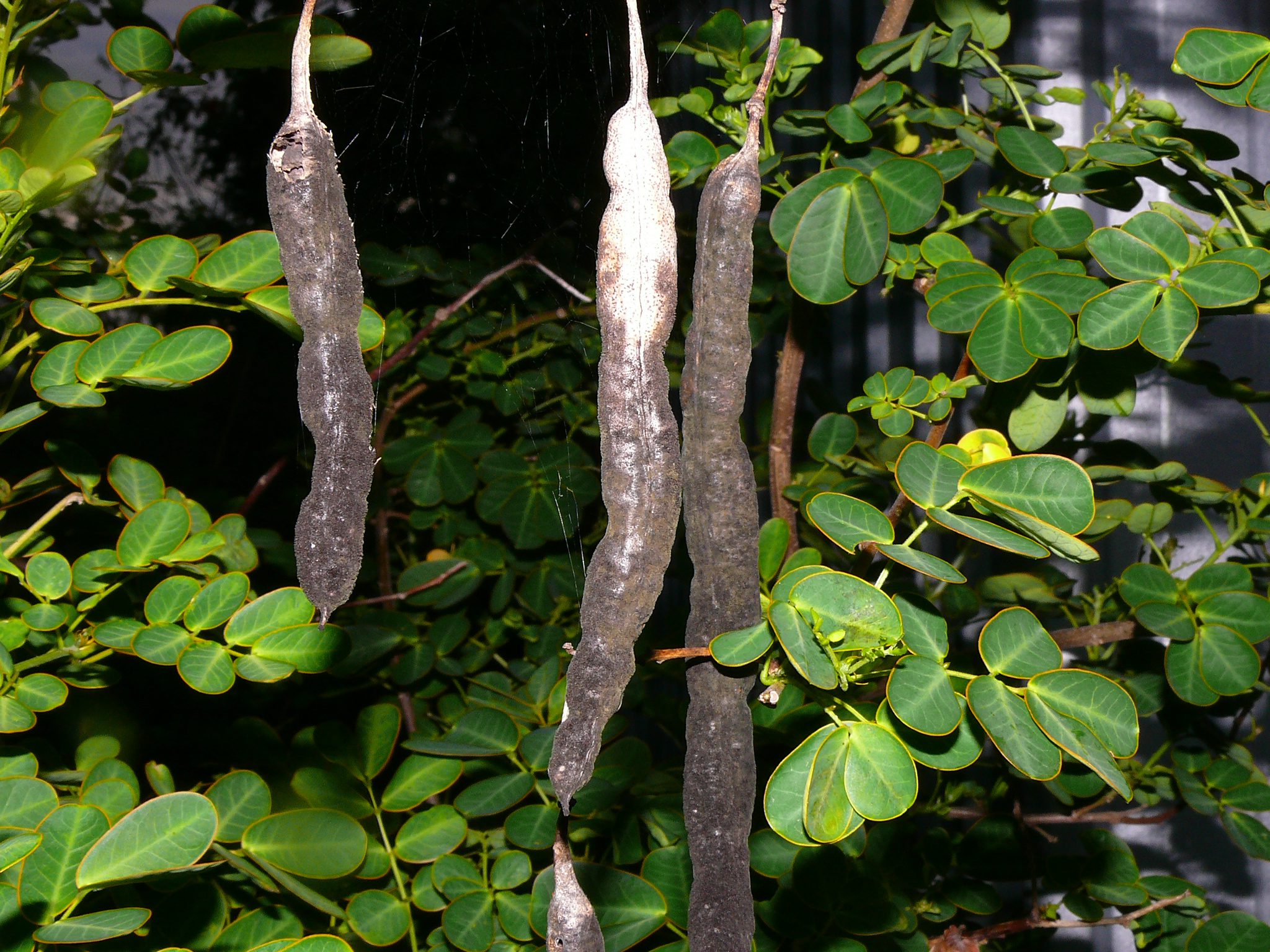






Sprawling perennial shrub or branch climber to 8m. Stems often grow in a zigzag pattern and may be sparsely hairy. Previously Cassia coluteoides.
| Weed Category: |
Other invasive plants Invasive plants that are not prohibited or restricted invasive plants, but are known to spread readily and cause negative impacts, within the region.
|
| Weed: | Yes |
| Form or habit: | Vine (Climbing, Twining or groundcover), Shrub |
| Family: | Caesalpiniaceae |
| Leaf: | Compound Alternate Alternate pinnate with opposite stalkless or shortly stalked leaflets, lacking a terminal leaflet; usually increasing in size from lower to upper pairs. Total length 30-50mm, including the 15-35mm stalk. Three to six pairs of obovate leaflets, 15-50 x 10-25mm, glabrous except for a few hairs on the underside; a conical gland is present between the lowermost pair of leaflets. |
| Flower conspicuous: | Conspicuous |
| Flower colour: |
Yellow |
| Flower description: | Yellow somewhat orchid-like or cup-shaped with 5 sub-equal-sized petals; 12-17mm long; borne in 2-8 flowered clusters in upper leaf axils. |
| Fruit conspicuous: | Conspicuous |
| Fruit colour: |
Brown |
| Fruit: | Dry |
| Fruit description: | Brown pods, pendulous, irregularly cylindrical, glabrous, 100-140 x 10mm, containing up to 50 plump pear-shaped dark brown to black seeds, about 6 x 3.5mm. Pods tend not to open spontaneously on reaching maturity. Environmental weed. |
| Habitat: | |
| Distribution | |
| Food source for: | |
| Toxicity: | Toxic if ingested |
| Origin: | Tropical South America |
| Notes: | Spread by: seeds expelled from opening pods, water, contaminated soil on machinery (harvesting, earthmoving, and 4WDs), animal hooves, manure, contaminated harvest material and fodder. Garden waste. Invades/threats: everywhere; grazing, agriculture and the environment are all under threat. Notes: garden escapee. This species is not declared but is widely naturalised in coastal communities, Melaleuca forests, creek banks and rainforests in this region. Weedy sennas produce numerous seeds that, in a short time, may accumulate a large soil seed-bank. As seeds remain viable for up to a decade or more, germination can take place over many years, whenever conditions are suitable. They are capable of forming dense stands and compete with pastures and crops for light, moisture and nutrients. Most species are toxic to cattle and while mature pods and seeds are sometimes eaten, the plants are relatively unpalatable and soon die off. Environmental weed. |
| Information sources: | Mackay Regional Pest Management Group (2018) Weeds of the Mackay Whitsunday Region Second Edition. |